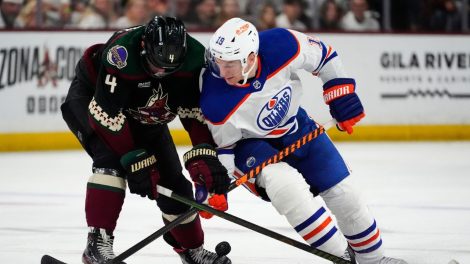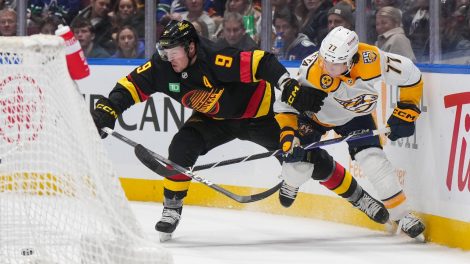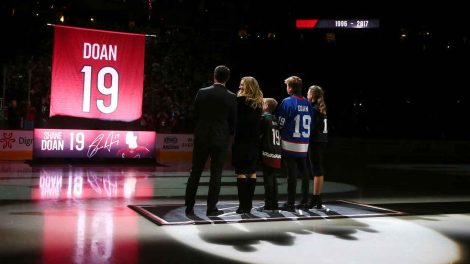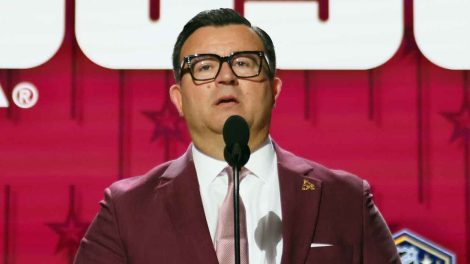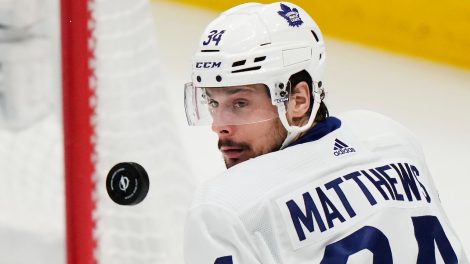Among the hot trends in hockey is this concept the NHL has turned the keys to the game over to the kids.
“It’s a young man’s game now,” says every NHL coach.
Kids rock. Kids stir fan pulses. Kids occasionally get told to limit their Fortnite activity.
That once-admired Detroit Red Wings notion of letting prospects “over-ripen” in the minors seems quaint now that teams are loosening the leash on raw rookies in a league where skill and speed trump size and experience.
Where first-year players — even top picks — tended to be eased into lineups, over the past couple of seasons overnight sensations like Auston Matthews, Patrik Laine, Mathew Barzal and Brock Boeser, among others, have become impact players. A copycat league took note.
The evolution of the style of play – faster and less physical — with stricter enforcement of head hits, has enabled teen players and 20-year-olds to survive and even thrive in today’s NHL.
Yet, there are still enough rookies getting hurt to question the wisdom of letting teens play against fully grown men. Or at least to consider the risk/reward of this trend.
Just a couple of weeks into his NHL career, Elias Pettersson, the stylish Swedish centre for the Vancouver Canucks, was hog-tied and slammed to the ice by Florida’s Mike Matheson.
Pettersson, in a vulnerable position and unsuspecting of the nature of Matheson’s hit and take-down, suffered a concussion.
Pettersson is a classic example of the risk/reward balancing act general managers have to make on these kids. At six-foot-two, 176 pounds, Pettersson is a wisp of a man, a 19-year-old who will grow into his body. While he is physically overmatched by veteran NHLers, he is so gifted. He dances around more experienced players, and is leading all rookie scorers with 10 points in eight games despite missing six contests.
Of course the Canucks want him in their lineup, but it would be devastating to see him suffer another head injury before he’s fully developed.
BUSINESS FACTOR
The Senators have had two teenagers out with injuries. Forward Alex Formenton, who reached the nine-game threshold Thursday against Buffalo, suffered a concussion in early October. Winger Brady Tkachuk remains out with a torn ligament in his leg, although he is back practising and could rejoin the team next week.
Formenton rebounded from his concussion and has shown flashes, but not enough to prevent GM Pierre Dorion from sending him back to junior after Thursday’s game. Had he played one more in the NHL, Formenton would have burned a year off his entry-level contract. After 40 games, he would have moved a year closer to free agency.
Not anymore. He is a junior again. Not for his own protection, but because the Senators can save a bit of money, let Formenton regain his scoring touch in junior, and play for Canada in the world juniors. He had one goal (his lone point) in nine NHL games.
After his final outing of the season on Thursday, head coach Guy Boucher raved about Formenton, saying he played another “unbelievable” game. If that was a last-ditch effort to sway Dorion, it didn’t work.
[relatedlinks]
Tkachuk need not worry about a demotion. He will be here to stay.
At six-foot-three, 196 pounds, Tkachuk is nobody’s idea of a skinny kid. Nevertheless, having just turned 19, he will get bigger and stronger, and might learn to pick his spots a bit more. In just his fifth career game, Tkachuk made an aggressive hit on Blake Comeau of the Dallas Stars, rolled off him and got hurt slamming into the boards. Tkachuk was having a ball in his first couple of weeks in the pros, looking every bit the young colt running wild in the paddock.
Other rookies seem more vulnerable. One sporting parent told me he worries for Montreal’s Jesperi Kotkaniemi every time he watches the Canadiens play. Kotkaniemi, skilled and skinny at six-foot-two, 184 pounds, is gradually finding his way. On Tuesday against Dallas, Kotkaniemi got slew-footed in the neutral zone and crashed awkwardly to the ice. He got up and was unhurt.
It took him 12 games, but Kotkaniemi scored his first NHL goal Thursday against Washington and then notched another to tie the game, which Montreal won. More souvenir pucks for triumphant kids.
The Buffalo Sabres arrived in Ottawa with two teenagers in their lineup: defenceman Rasmus Dahlin, the 2018 first-overall draft pick, and forward Casey Mittelstadt. Both have played in all 13 of the Sabres’ games this season. Silky-smooth with the puck, both were on the first-unit power play against the Senators, although the Sabres don’t overexpose them. Dahlin played a little more than 17 minutes; Mittelstadt 15, in Buffalo’s 4-2 loss.
Sabres head coach Phil Housley said his biggest worry where the kids are concerned is saving them from themselves.
“If you look at the body of work of young players, whether it’s leading up to the draft and all the obligations they have, and then the stress coming into camp because they want to do well, there’s a lot of pressure on the younger players,” Housley says.
Housley knows something about rookie pressure. He broke into the NHL as a sixth-overall draft pick. At 18, he played 77 games on defence for the Sabres in 1982-83, producing 66 points.
“Players now are students of the game and they tend to get a little bit too involved,” Housley says. “What I’m saying is, they’re watching their shifts, they continue to try to get better, which is a good thing. But they also have to realize when they have a day off they have to use that time to get away from the game, reboot, relax. So you’re ready to go the next day.”
Housley dodged the question of whether he was worried about the physical imbalance of teens playing against men.
[snippet id=4269767]
SAFER PLACE?
There is a case to be made that the NHL is a safer place — for rookies and veterans — than it used to be.
As one NHL strength coach said, “you don’t have 250-pound players flying around anymore.”
Enforcers are all but extinct. Players have to play or won’t get a roster spot. Players are lighter, faster. The little guy gets opportunity now.
At least until the playoffs, the emphasis is on finishing plays, not finishing checks.
The way rules are being enforced, players are also having to rethink how they approach the physical aspect of the game, especially open-ice hits that could result in injury.
The NHL department of player safety, though not always consistent, has made it plain that hits to the head will not be tolerated.
It’s worth nothing that Matheson was suspended two games for his hit on Pettersson. Senators defenceman Mark Borowiecki is currently serving his second suspension of the season for a pair of high hits.
The way many GMs see it, up-and-coming prospects are likely playing against men somewhere, either in the minor pros or college, where players like Tkachuk routinely went up against 24-year-olds. A few, like Formenton, get a taste in the NHL and then revert to junior.
To Housley, the key to integrating teens into the lineup is to provide veteran guidance both on and off the ice. Tips on opponents. Tips on life.
“We try to manage things for our young guys,” Housley says. “But they love hockey. They have a passion for it, which is great.”


